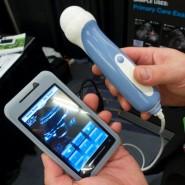March was an intense month for medical imaging. The proposed Stage 2 Meaningful Use Requirements were hot off the presses when a study in Health Affairs found that electronic access to imaging results increases ordering of additional tests. What is an accountable care organization and its team of radiologists and referring physicians to do? Let’s dissect each piece.
March was an intense month for medical imaging. The proposed Stage 2 Meaningful Use Requirements were hot off the presses when a study in Health Affairs found that electronic access to imaging results increases ordering of additional tests. What is an accountable care organization and its team of radiologists and referring physicians to do? Let’s dissect each piece.
Imaging Inclusion in Stage 2
On March 7, The Office of the National Coordinator for Health IT (ONC) filed stage 2 meaningful use guidelines with the Federal Register. While still in the comment period and subject to change, the new MU rules finally recognize imaging—an area lacking attention in stage 1—in several ways including a measure focused on diagnostic image accessibility in EHR’s (40 percent of scans and tests being accessible) and more clinical quality measures relevant to radiology (60 percent use of CPOE and adding radiology and labs). CMS also requested comments about requiring 10 percent of images to be transmitted in HIEs. Health Data Management hosted a great MU Stage 2 Webinar (archive available now) that looked in detail at data exchange requirements, online patient access to medical information, and increased CPOE thresholds. With a more direct connection between radiology and the EHR, providers who are embracing meaningful use now have a more complete model for how to improve the quality of patient care while reducing costs.
Health Affairs IT Study
On the heels of stage 2, the results of a 2008 study, “Giving Office-Based Physicians Electronic Access to Patients’ Prior Imaging and Lab Results Did Not Deter Ordering of Tests,” ignited a debate between the study authors and Dr. Farzad Mostashari, National Coordinator for Health Information Technology over claims that the meaningful use of EHRs will have little impact on the cost or quality of care.
Mostashari’s position – the study was dated before the passage of the HITECH Act, lacked consideration for the clinical decision support in certified EHRs, used association to suggest causality, and had no regard to whether more testing was medically necessary.
The authors’ position – there have been no “game changing” developments in past four years, EHR products have undergone only modest tweaks, and “Dr. Mostashari’s unbridled faith in technology is mirrored by his belief that ACOs are the next panacea for health costs and quality.”
My position – the debate’s focus on EHRs is too narrow. To truly understand the study’s assumption you need a more detailed look at the health IT ecosystem vs. a single component— in particular, the use of a radiology information system (RIS) and its interplay with the EHR deserves more attention. Were the providers studied using a RIS module within the EHR or a standalone RIS system? There is often cost-based pressure to use the EMR’s RIS module, but these modules often deliver limited functionality. Fully featured reporting and embedded voice recognition are usually not included. Built-in rules and triggers for complex exams at the time of scheduling, ordering, or even prior to the exam being started, (including angiography, contrast exams, positron emission tomography [PET], computed tomography [CT] and magnetic resonance [MR] exams) may not be offered—all deficits that could impede efficiency, lead to unnecessary testing and ultimately create higher costs. Perhaps the debate and study shouldn’t be centered on general “electronic access,” but the appropriate combination of health IT systems within the hospital ecosystem.
in particular, the use of a radiology information system (RIS) and its interplay with the EHR deserves more attention. Were the providers studied using a RIS module within the EHR or a standalone RIS system? There is often cost-based pressure to use the EMR’s RIS module, but these modules often deliver limited functionality. Fully featured reporting and embedded voice recognition are usually not included. Built-in rules and triggers for complex exams at the time of scheduling, ordering, or even prior to the exam being started, (including angiography, contrast exams, positron emission tomography [PET], computed tomography [CT] and magnetic resonance [MR] exams) may not be offered—all deficits that could impede efficiency, lead to unnecessary testing and ultimately create higher costs. Perhaps the debate and study shouldn’t be centered on general “electronic access,” but the appropriate combination of health IT systems within the hospital ecosystem.
MU Certified RIS
With meaningful use, certification adds another layer of complexity and opportunity. RIS vendors are developing certified standalone RIS solutions that both satisfy specific radiology workflow challenges while evolving to address changes in healthcare regulations. These advanced RIS solutions offer tools like:
- Order entry decision support – The American College of Radiology (ACR) has been working to create a decision support database for several years. The objective is to outline which imaging exams are medically appropriate for a patient’s symptoms or diagnosis. The ACR’s decision support database is currently being tested in several hospitals. Certified RIS platforms are available that support user-defined rules so each facility can set its own standards for the “appropriateness” of an imaging exam. These platforms can be adapted to support the ACR criteria when they are finalized.
- Exam protocols – Radiologists already use established protocols for ordering complex imaging exams at large teaching facilities and specialty hospitals. Protocol variations involve scan thickness, scan sequences, reconstructions, gantry tilt and other characteristics. The specific protocol is determined by a patient’s diagnosis, stage of disease, type of treatment level and other data. In the future, hospitals of all sizes and other imaging providers may adopt a list of protocols to ensure optimal imaging results based on a patient’s disease state.
- Quality Outcomes – There is a movement toward establishing guidelines for capturing, maintaining and reporting radiation dose, speed of reports and other factors that can enhance diagnosis and treatment. The RIS is the likely platform to collect and store patient imaging data as part of this effort to help improve patient outcomes.
- Structured Reporting – Conversion to structured reporting is driven by results from studies that show that up to 80 percent of physicians do not fully understand the radiologist’s diagnosis as presented in the report. Use of paragraph-style reporting based on dictation by a radiologist will likely be replaced with structured reporting that involves the selection of clear, standardized wording to convey a diagnosis. Standardized wording not only will make a diagnosis easier to understand, but it also will enhance the ability for data mining by research facilities nationwide. This can play into the goals of meaningful use and using population based data to improve overall outcomes by ensuring the correct tests are ordered the first time based on patient conditions, while also lowering the cost of care.
What do you think of the Health Affairs debate? Is RIS a missing link in this health IT and meaningful use discussion?









